AIS-Search and Rescue Transmitters (AIS-SARTs)
Since 1 January 2010, AIS – Search and Rescue Transmitters can be carried in lieu of Search and Rescue Radar Transponders on vessels subject to the 1974 SOLAS Convention.
Purpose and method of operation of an AIS-SART
The AIS-SART is designed to transmit AIS messages that indicate the position, static and safety information of a unit in distress. An AIS-SART has an integral position source (e.g. a GPS receiver) and accordingly, AIS stations receiving the AIS-SART signal are able to display the range and bearing to the AIS-SART.
AIS-SARTs can only be detected by AIS installations. They cannot be interrogated, and transmit autonomously once activated. AIS-SARTs use the Self-organizing Time Division Multiple Access (SOTDMA) protocol in the similar way to a Class A mobile AIS station.
An AIS-SART is designed to be deployed in a similar way to a SART in that it is designed to operate from a survival craft at a height of 1 m above sea level. It may be fitted as an integral part of a survival craft, and can be manually activated or de-activated. Automatic activation may be provided. It is supplied with a buoyant lanyard of highly visible yellow/orange colour to secure it to the survival craft.
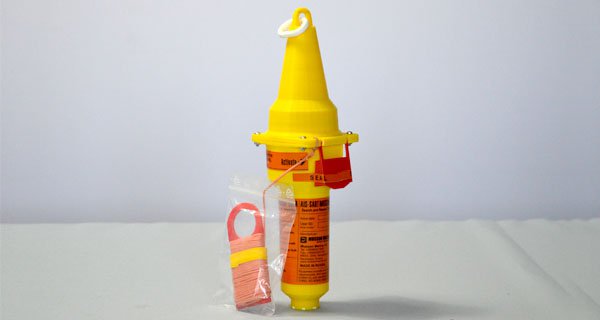
Indication of operation
An AIS-SART is to be equipped with a means which is either visual or audible, or both visual and audible, to indicate correct operation locally and be provided with test facilities for all functionalities using specific test information. An indication will be provided to show that the AIS-SART has been activated, is undergoing test and has completed test. There will also be an indication of the position fixing system status when the AIS-SART is activated.
The pre-set broadcast messages of SART TEST or SART ACTIVE should be seen as text adjacent to an AIS-SART target symbol on AIS installations fitted on vessels or shore stations in VHF reception range of the unit in distress, and is to be clearly distinguished from an AIS installation (i.e. a ship, AIS AtoNs, etc). In ships fitted with an AIS MKD (Minimum Keyboard and Display), the text only will be seen, together with range and bearing.
Detection distances
Detection range of an AIS-SART 1 m above the sea surface by a Class A mobile AIS station antenna at 15 m above the sea surface over water is be at least 5 n miles, but have been found to be 9.5 n miles in tests. Detection ranges are much greater from aircraft, and tests have shown detection of an AIS-SART from a xed wing aircraft at 115 - 129 n miles (at 20 000 feet), 81-95nmiles(at10000feet),60nmiles(at5000feet) and 25 n miles (at 1 000 feet).
AIS-SART unique identification
An AIS-SART, being an AIS transmitter, has a unique identi er, (an MMSI) using the format 970xxyyyy, where xx is the manufacturer ID from 01 to 99 and yyyy is the sequence number assigned by the manufacturer from 0000 to 9999. (The manufacturer ID xx = 00 is reserved for test purposes.) The MMSIs of AIS-SARTs are not recorded by the ITU or rescue authorities, nor are they tied to a particular ship.
Once programmed by the manufacturer it shall not be possible for the user to change the unique identifier.
See Appendix 13 for further information issued by the IMO (SN.1/Circ.322) on display of AIS-SARTs, AIS-MOB devices and EPIRB-AIS devices.
AIS-SART symbol
The IMO agreed symbol for an AIS-SART is shown below:
Topic: AIS Search and rescue Transmitter (AIS-SART)
Symbol:
![]()
Description: A circle containing a cross drawn with solid lines
Shipboard Indication of AIS-SART
The symbol above will not be displayed on older AIS or ECDIS displays. In these cases, the symbol will be a ship symbol without a name, together with range and bearing. As the firmware/software of the AIS and ECDIS is updated, the agreed symbol will be displayed. Irrespective of what is displayed, the MMSI beginning with 970 will be displayed and there will be an associated text message ‘SART ACTIVE’ or ‘SART TEST’ displayed as appropriate. On an ECDIS, the symbol should be 5 mm in diameter and coloured red.
ACTIVE mode operation
The AIS-SART will have two modes when activated: ACTIVE or TEST. (References to ‘Messages’ refer to AIS Messages de ned in Recommendation ITU-R M.1371).
In Active mode, messages are transmitted in a burst of 8 messages once per minute. The duration of the burst is 14 s (beginning to end). A burst consists of 8 messages, split between AIS 1 and AIS 2. Only one burst is necessary to be detected from time to time for a rescue vessel to locate the AIS-SART. The multiple messages are designed to maximise detection in a seaway.
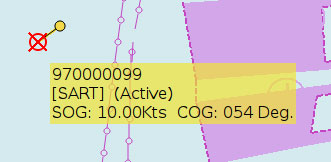
The position shall be determined every minute.
The AIS-SART will start transmitting within 1 min after activation. If the position is unknown, a default position will be used (+91; +181). If time is not established, operation will commence unsynchronised but shall begin synchronised transmission with correct position within 15 min.
If the AIS-SART cannot obtain time and position within 15 min, the AIS-SART shall attempt to obtain one for at least 30 min in the rst hour and at least 5 min in each subsequent hour.
Message 1 (Position Report) is transmitted with the Navigational Status set to 14 (SART ACTIVE).
Message 14 (Broadcast safety related message) is transmitted with the text ‘SART ACTIVE’.
Message 14 is transmitted every 4 minutes, and replaces one of the position reports on both channels. So, in a burst of 8 messages, the rst 4 messages will be position reports, then 2 messages of ‘SART ACTIVE’, then 2 messages of position reports. This sequence is then repeated.
If position and time synchronisation is lost, the AIS- SART continues to transmit with the last known position and indicates that the position system is inoperative.
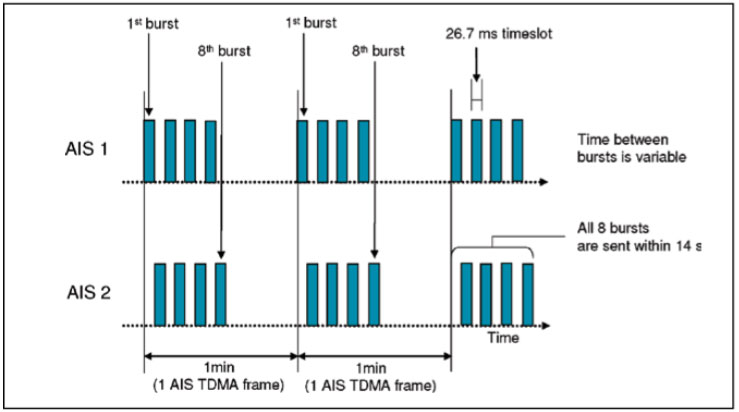
TEST mode operation
In TEST mode, the AIS-SART will broadcast Message 14 with the text ‘SART TEST’. The operation can be summarised in sequence as below:
• In test mode, there shall be only one burst of 8 messages, 4 on each channel.
• The first and last messages of the sequence will be Message 14 with the text ‘SART TEST’.
• The remaining messages will be Message 1 with Navigational Status set to 15 (Undefined).
• The test messages shall be transmitted in one burst after position, SOG (speed over ground), COG (course over ground) and time are available.
• If the AIS-SART does not acquire position, SOG, COG and time within 15 min it will transmit anyway, but with appropriate default values (i.e. lat = 91, long = 181, COG and SOG = unavailable, time=position system inoperative)
• After the test transmission burst has completed, the test facility will reset automatically.
AIS-SART carriage requirements
GMDSS carriage requirement for AIS-SARTs are the same as for SARTs, in that they can be used in lieu of (radar) SARTs.
Physical requirements
The environmental and basic requirements are rugged and similar to a SART. It is to be watertight to a depth of 10 m for 5 min, oat (not necessarily in an operating position), survive a drop into water from 20 m, not be unduly a ected by seawater or oil and be of a highly visible yellow/orange colour, etc.
Nominal radiated transmit power of an AIS-SART shall be 1 W, and each transmission shall alternate between the frequencies of AIS 1 and AIS 2.
The AIS-SART should have sufficient battery capacity to operate for 96 h (-20°C to +55°C).
The unit will be have a durable label with brief operating and test instructions, expiry date (battery replacement date) for the primary (i.e. non-rechargeable) battery used, and the unique identifier (MMSI).
Routine testing of AIS-SARTs
IMO recommends testing of AIS-SARTs be done sparingly, in order to prolong battery life, avoid mis-activation and confusion. If testing is required in port, the port authorities should be informed prior to activation, who can also confirm successful testing.
The AIS-SART should be physically examined at least once/month with a view to ensure is no obvious physical damage, battery expiry date and the support cradle is intact.
There is a special equipment intended to test all parameters of AIS-SART.
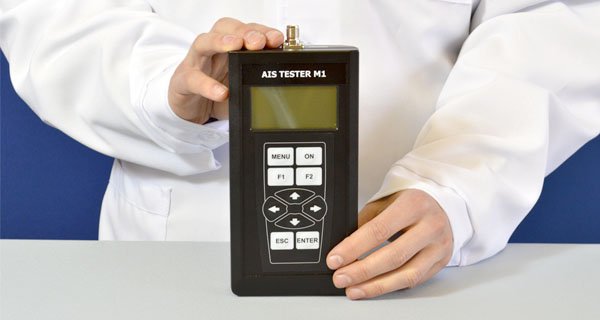
AIS Tester is professional equipment for surveyors, classification societies and administrative authorities, which can use it to provide qualified testing of the Class A and Class B AIS mobile stations and AIS-SARTs.
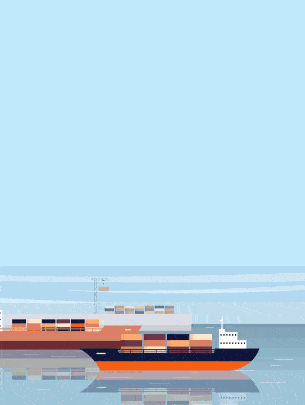
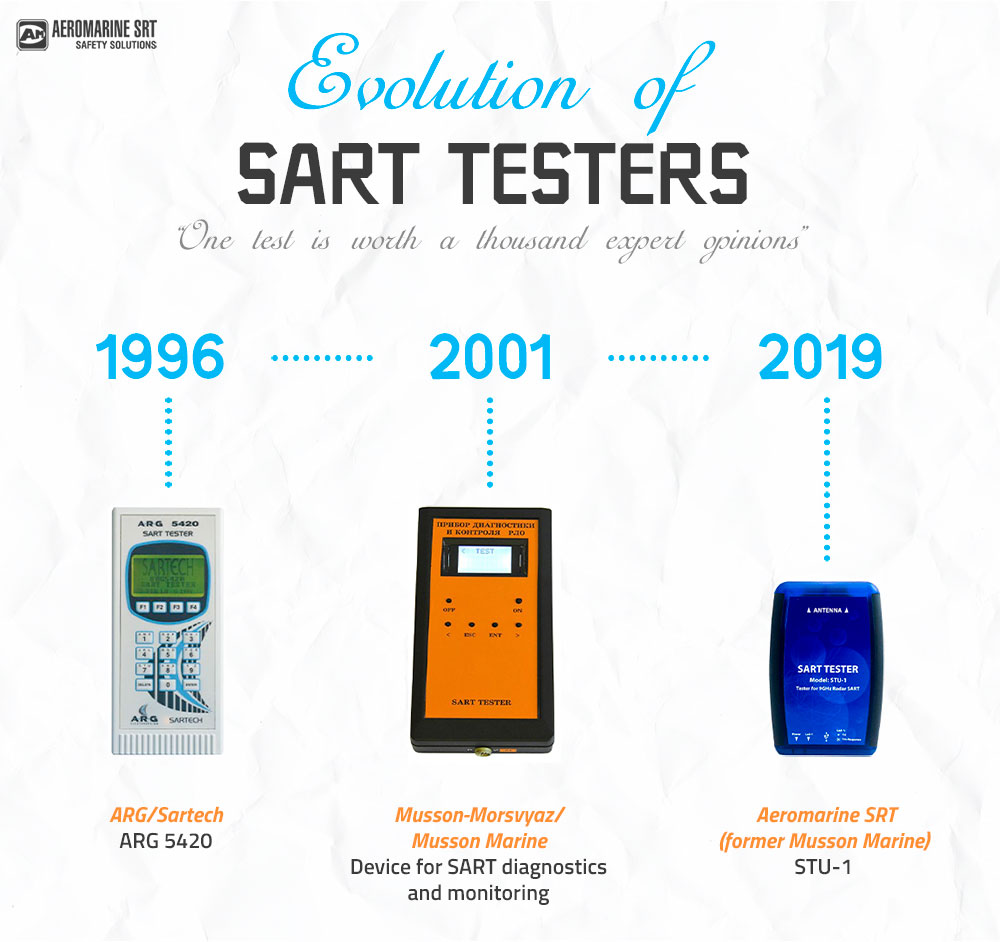
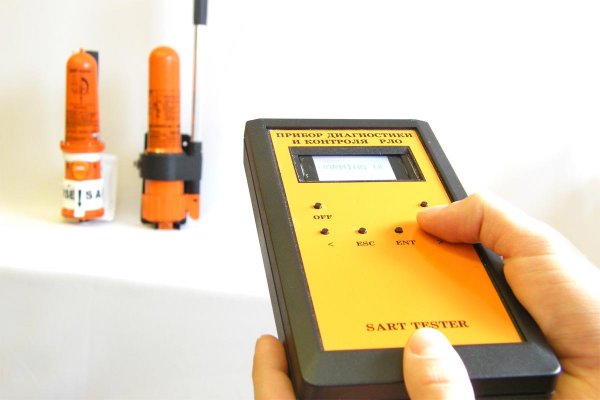


Garmin AIS600 and SART message problem
The boat is in Greek waters, and has an integrated Garmin system, including Series 5000 plotter below and 4000 plotter at the binnacle, together with AIS600, all dating from ca 2011 . This year SART messages started appearing frequently, and although cancelled, soon reappear. The constant alarm cancelling requirement makes the AIS unusable and it is then switched off. The frequency of the alarms is increasing, and it occurs whenever the AIS is in use. One day it is one boat/MMSI, another day a different one. All Garmin can suggest is that I make sure the software is up-to-date. It is several years since a new software download was done, but I'm not convinced that this is the root cause. An electronics engineer checked the AIS in Greece; the aerial/antenna is ok, the LEDs are healthy, and diagnostics run from a PC show no faults. The engineer has not seen this before, and suggested bringing the AIS box back to the UK. Have you encountered this issue, and if so how was it resolved. I'm fairly certain that I've seen ranges for these SART messages (not sure if test or active) at much greater distances than quoted above. Does the AIS depend on GPS as well as VHF/splitter antenna/aerial? Your article seems to suggest this. Anyway. there's a problem. Your comments would be welcomed.
I am on the West Coast of Canada an I have the exact same problem as you have on a Garmin GPSmap 750 and Garmin AIS 600. Very annoying and the AIS is usually off as a consequence. What was your solution?